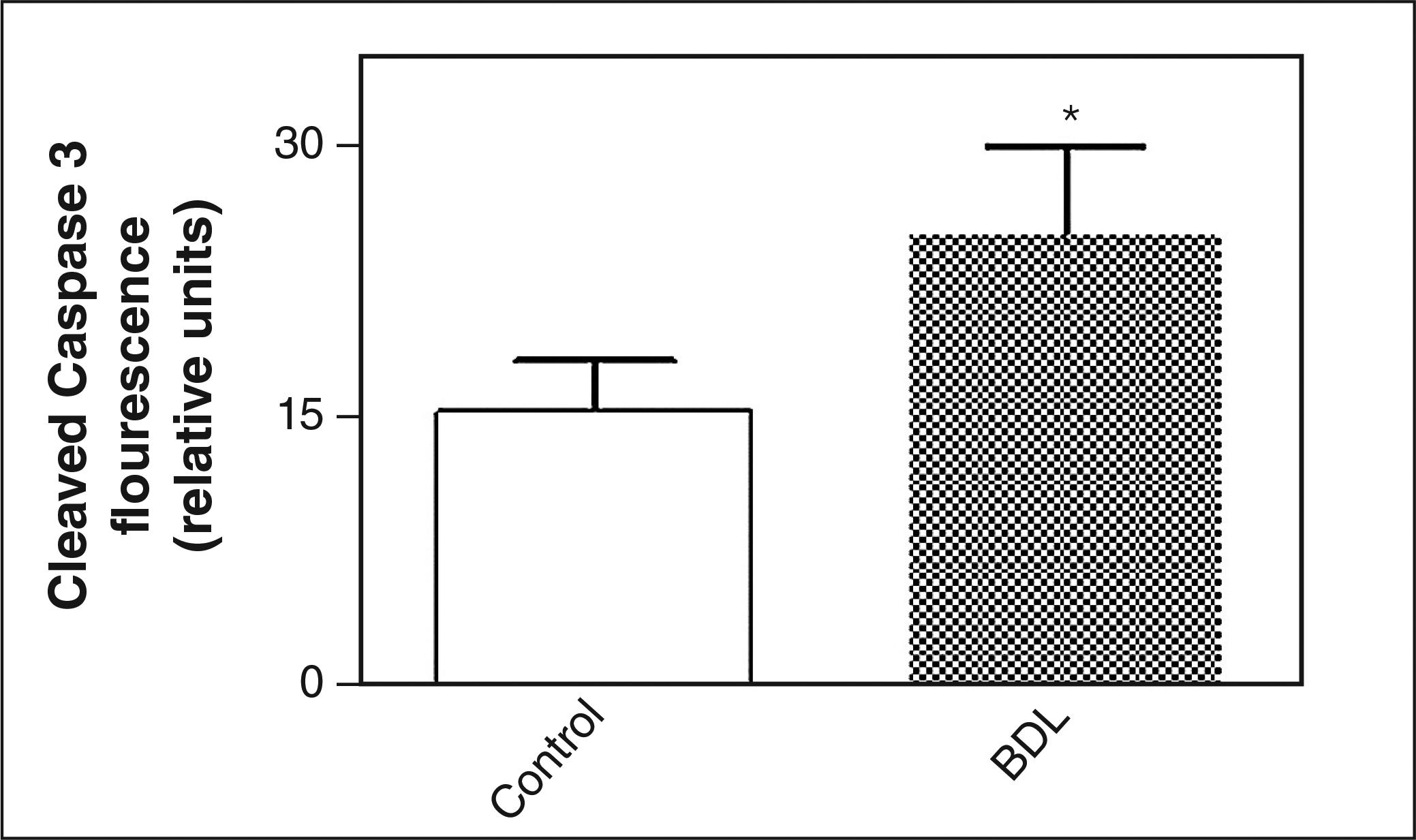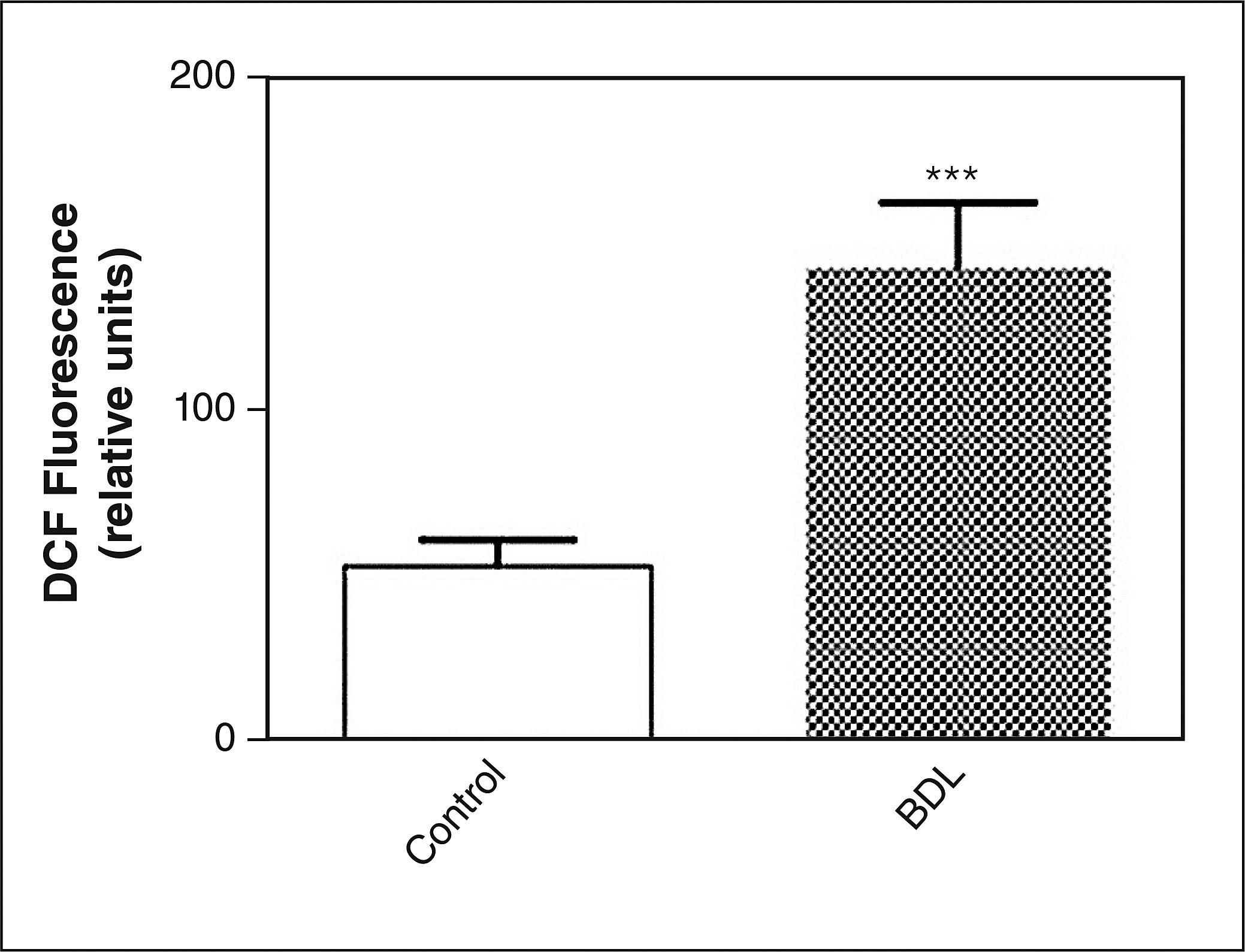Background
Renal failure is a frequent and serious complication in patients with decompensated cirrhosis.
Objectives
We aimed to evaluate the renal oxidative stress, cell damage and impaired cell function in animal model of cirrhosis.
Methods
Secondary biliary cirrhosis was induced in rats by ligation of the common bile duct. We measured TBARS, ROS and mitochondrial membrane potential in kidney as markers of oxidative stress, and activities of the antioxidant enzymes. Relative cell viability was determined by trypan blue dye-exclusion assay. Annexin V-PE was used with a vital dye, 7-AAD, to distinguish apoptotic from necrotic cells and comet assay was used for determined DNA integrity in single cells.
Results
In bile duct ligation animals there was significant increase in the kidney lipoperoxidation and an increase of the level of intracellular ROS. There was too an increase in the activity of all antioxidant enzymes evaluated in the kidney. The percentage viability was above 90% in the control group and in bile duct ligation was 64.66% and the dominant cell death type was apoptosis. DNA damage was observed in the bile duct ligation. There was a decreased in the mitochondrial membrane potential from 71.40% ± 6.35% to 34.48% ± 11.40% in bile duct ligation.
Conclusions
These results indicate that intracellular increase of ROS cause damage in the DNA and apoptosis getting worse the renal function in cirrhosis.
Liver cirrhosis; Renal insufficiency; Oxidative stress; Flow cytometry; Reactive oxygen species







